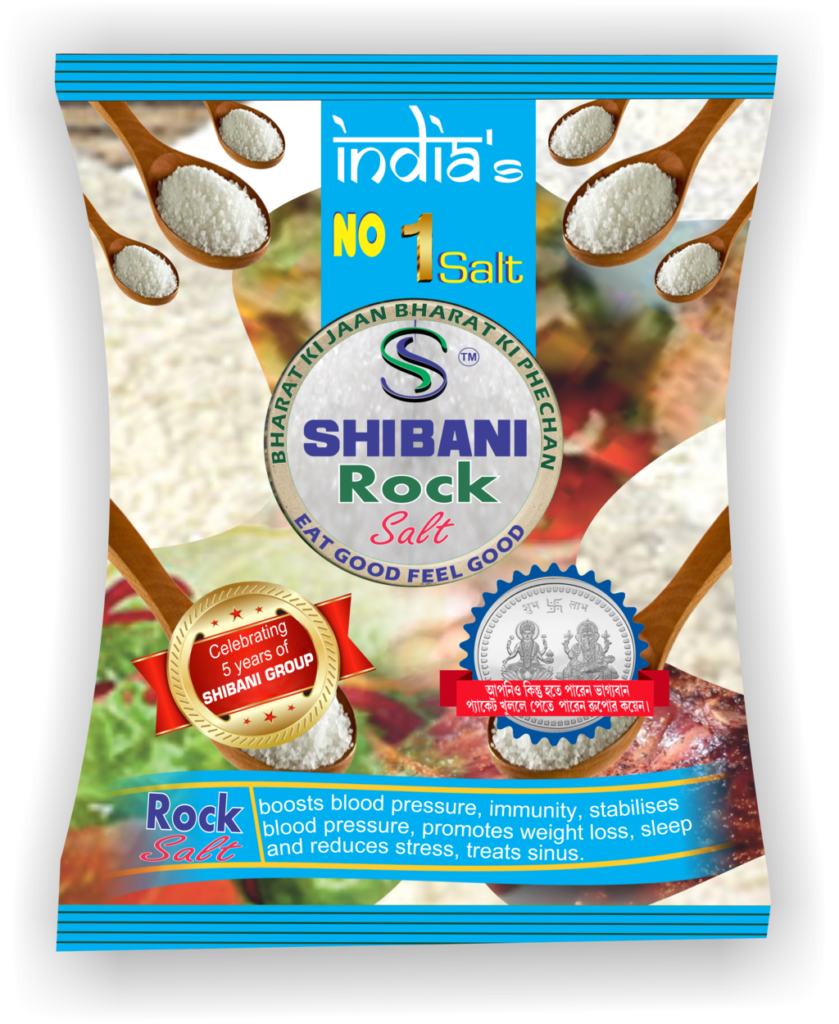
PRODUCTS
SHIBANI SALT
Salt is a mineral composed primarily of sodium chloride (NaCl), a chemical compound belonging to the larger class of salts; salt in its natural form as a crystalline mineral is known as rock salt or halite. Salt is present in vast quantities in seawater, where it is the main mineral constituent. The open ocean has about 35 grams (1.2 oz) of solids per liter of sea water, a salinity of 3.5%.
Salt is essential for life in general, and saltiness is one of the basic human tastes. Salt is one of the oldest and most ubiquitous food seasonings, and salting is an important method of food preservation.
Salts can be several different colors and may be any of the five tastes, including salty, sweet, bitter, sour or savory. Their odor depends on the acid and base it is comprised of. Salts comprised of strong acids and bases, called strong salts, are odorless.
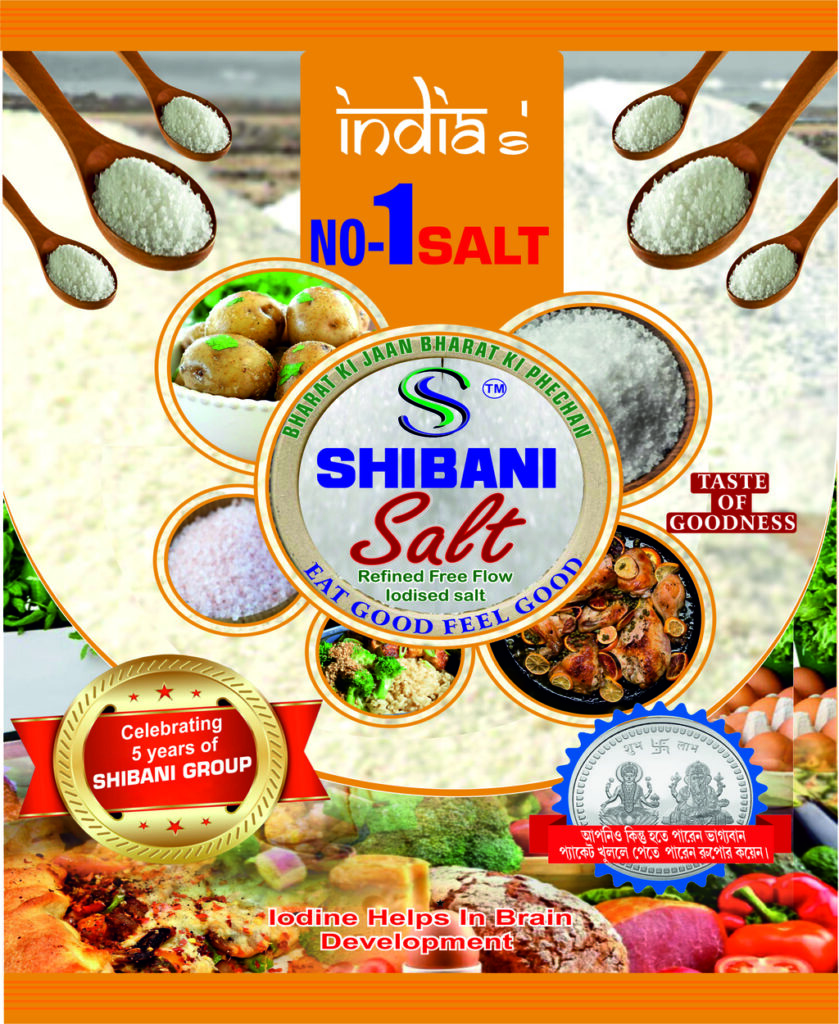
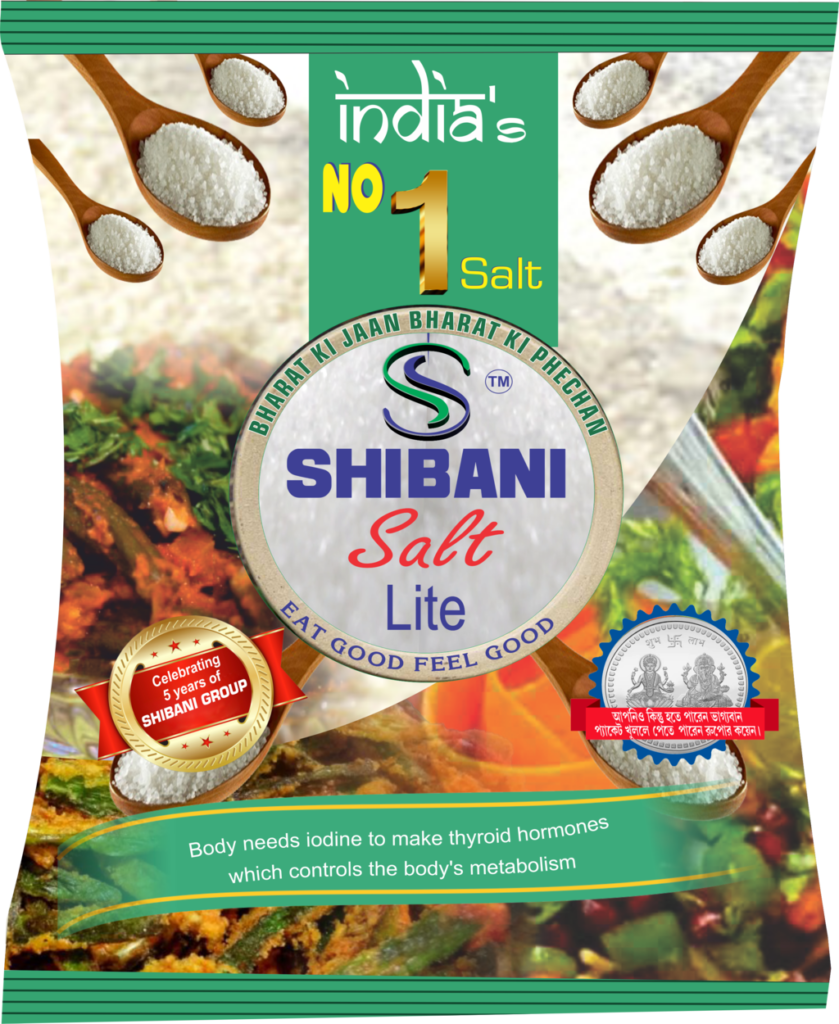
SHIBANI SALT LITE
Salt is a mineral composed primarily of sodium chloride (NaCl), a chemical compound belonging to the larger class of salts; salt in its natural form as a crystalline mineral is known as rock salt or halite. Salt is present in vast quantities in seawater, where it is the main mineral constituent. The open ocean has about 35 grams (1.2 oz) of solids per liter of sea water, a salinity of 3.5%.
Salt is essential for life in general, and saltiness is one of the basic human tastes. Salt is one of the oldest and most ubiquitous food seasonings, and salting is an important method of food preservation.
Salts can be several different colors and may be any of the five tastes, including salty, sweet, bitter, sour or savory. Their odor depends on the acid and base it is comprised of. Salts comprised of strong acids and bases, called strong salts, are odorless.
SHIBANI SALT PLUS
Salt is a mineral composed primarily of sodium chloride (NaCl), a chemical compound belonging to the larger class of salts; salt in its natural form as a crystalline mineral is known as rock salt or halite. Salt is present in vast quantities in seawater, where it is the main mineral constituent. The open ocean has about 35 grams (1.2 oz) of solids per liter of sea water, a salinity of 3.5%.
Salt is essential for life in general, and saltiness is one of the basic human tastes. Salt is one of the oldest and most ubiquitous food seasonings, and salting is an important method of food preservation.
Salts can be several different colors and may be any of the five tastes, including salty, sweet, bitter, sour or savory. Their odor depends on the acid and base it is comprised of. Salts comprised of strong acids and bases, called strong salts, are odorless.
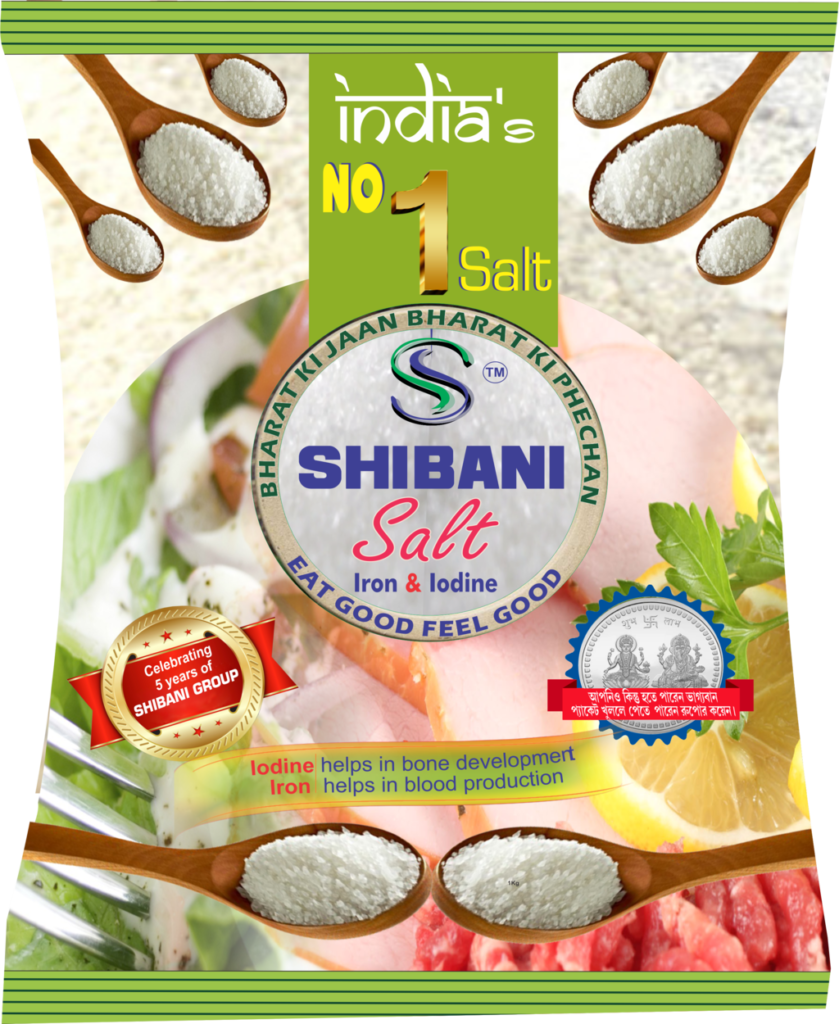
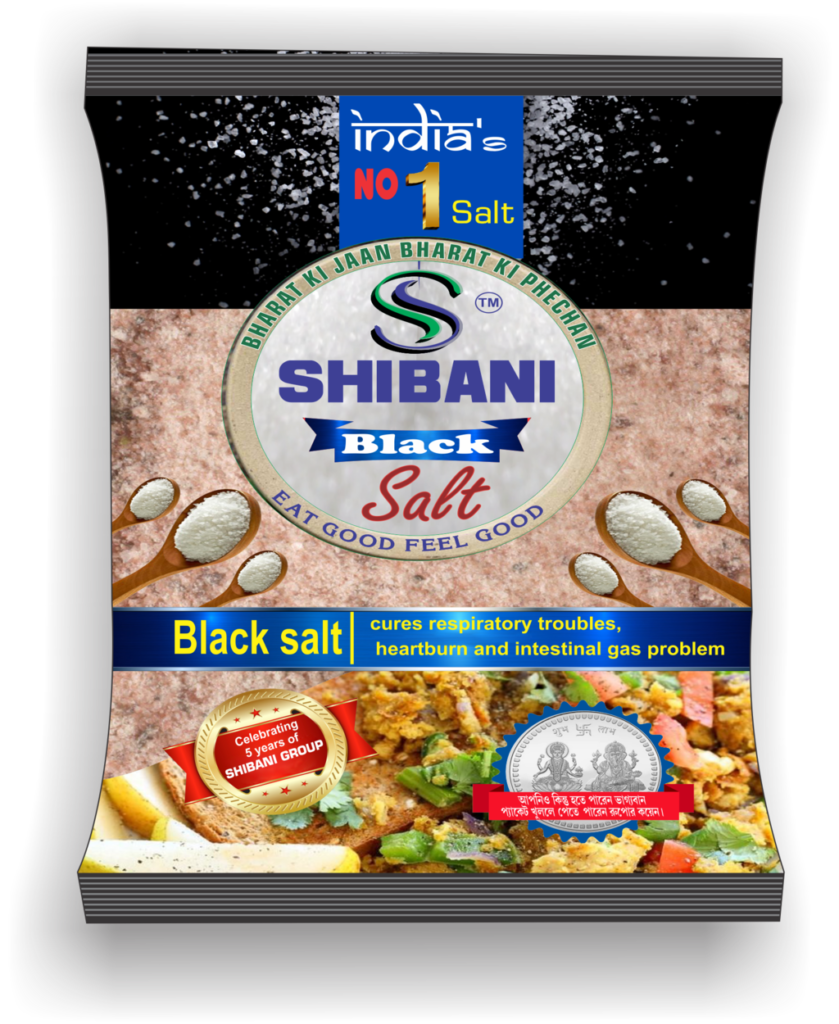
SHIBANI BLACK SALT
Salt is a mineral composed primarily of sodium chloride (NaCl), a chemical compound belonging to the larger class of salts; salt in its natural form as a crystalline mineral is known as rock salt or halite. Salt is present in vast quantities in seawater, where it is the main mineral constituent. The open ocean has about 35 grams (1.2 oz) of solids per liter of sea water, a salinity of 3.5%.
Salt is essential for life in general, and saltiness is one of the basic human tastes. Salt is one of the oldest and most ubiquitous food seasonings, and salting is an important method of food preservation.
Salts can be several different colors and may be any of the five tastes, including salty, sweet, bitter, sour or savory. Their odor depends on the acid and base it is comprised of. Salts comprised of strong acids and bases, called strong salts, are odorless.
SHIBANI ROCK SALT
Salt is a mineral composed primarily of sodium chloride (NaCl), a chemical compound belonging to the larger class of salts; salt in its natural form as a crystalline mineral is known as rock salt or halite. Salt is present in vast quantities in seawater, where it is the main mineral constituent. The open ocean has about 35 grams (1.2 oz) of solids per liter of sea water, a salinity of 3.5%.
Salt is essential for life in general, and saltiness is one of the basic human tastes. Salt is one of the oldest and most ubiquitous food seasonings, and salting is an important method of food preservation.
Salts can be several different colors and may be any of the five tastes, including salty, sweet, bitter, sour or savory. Their odor depends on the acid and base it is comprised of. Salts comprised of strong acids and bases, called strong salts, are odorless.
